|
|
Jejak: KL dibina dengan titis darah
Susunan Nasron Sira Rahim

Yap Ah Loy gubal peraturan ketat, susun struktur penempatan awal hingga kawasan lombong timah membangun jadi bandar raya
MENYUSURI jalan yang dipenuhi deretan rumah kedai di pekan besar itu, Yap Tet Loy, 47, mampu tersenyum dan menghela nafas puas melihat keriuhan dan kesibukan orang ramai bergerak ke sana sini menjalankan pelbagai urusan.
Suatu ketika dulu, dia sendiri tidak menyangka bahawa kedatangannya ke negara asing itu bakal membawa perubahan besar terhadap kehidupan dirinya sendiri khususnya keadaan di pekan besar itu.
Mengimbau kenangan lalu, masih diingat kelibat seorang remaja naif berusia 17 tahun yang menumpang jong membelah samudera luas menuju horizon yang tidak pernah dijejaki. Ketika itu dia cuma mengharapkan kehidupannya akan menjadi lebih baik di tanah orang.
Sejak kecil, dia melihat sendiri betapa sukarnya meneruskan kehidupan di tanah kelahirannya, sebuah kampung digelar Tam Shui di daerah Kwai Yap, Guangdong, China. Ketika dilahirkan pada 14 Mac 1837, Dinasti Qing sudah mengalami zaman kejatuhannya.
Ketika dia berusia tiga tahun pula, Perang Candu antara China dan Britain tercetus di Dongyuan Wumen, tidak jauh dari kampungnya menyebabkan dia serta penduduk kampung membesar ditemani kesusahan.
Justeru, mungkin menyedari bahawa kehidupan di kampungnya tidak menjanjikan sebarang harapan indah, Yap mengambil keputusan untuk turut menyertai penduduk negara itu berhijrah mencari sinar kehidupan di tanah asing.
Berbekalkan 80 syiling gangsa, dia menaiki jong dari Macau menuju Melaka, suatu tempat yang amat asing baginya. Nasibnya dipertaruhkan bak pepatah untung sabut timbul di permukaan air atau mungkin untung batu, tenggelam.
Kini, watak remaja naif itu sudah jauh ditinggalkan waktu. Tiga puluh dua tahun mengubah kehidupannya. Daripada harapan menggunung, ditemani pelbagai pengalaman, senyuman dan titisan darah, dia berjaya membawa sumbangan besar kepada tanah asing itu.
YAP Ah Loy
Daripada pekan kecil yang dikelilingi hutan dan lombong, Yap Tet Loy atau lebih dikenali sebagai Yap Ah Loy oleh ramai pihak memimpin penduduk Kuala Lumpur yang kebanyakannya pelombong Cina membangunkan kawasan itu.
Seterusnya daripada pekan kecil, dia menggubal pelbagai peraturan dan menyusun struktur penempatan sehingga pekan 慿oboi |
Rate
-
1
View Rating Log
-
|
|
|
|
|
|
|
|
|
|
|
Hukuman 'kejam' bendung jenayah
SEBAGAI Kapitan Cina, Yap Ah Loy memiliki kuasa seperti ketua di kalangan komuniti Melayu termasuk menjatuhkan hukuman terhadap masyarakat Cina. Beliau memiliki kuasa untuk membuat undang-undang, tetapi tidak boleh mengutip cukai.
Beliau memimpin penduduknya hidup dalam keadaan aman dan memiliki hubungan baik dengan masya­rakat Melayu sekitar Kuala Lumpur, termasuk ketua Melayu antaranya Datuk Dagang.
Untuk menghukum penjenayah dan mereka yang bersalah, Yap Ah Loy membina penjara besar yang mampu memuatkan 60 tahanan pada suatu masa selain menggubal peraturan mengikut kesalahan.
Contohnya, bagi kesalahan mencuri yang dilakukan pertama kali, pencuri akan diarak di jalanan dengan barang dicuri diikat di belakang dan bahunya manakala kesalahan kedua akan dipotong telinga dan kesalahan kali ketiga dihukum mati.
Hukuman mati yang dilaksanakan Yap bukanlah digantung atau dipotong kepala, tetapi pesalah akan melutut dengan tangannya diikat ke belakang dan pedang akan ditikam ke lehernya.
Bagi kesalahan kecil, pesalah akan dipenjara terlebih dulu sebelum dibicara. Hukuman yang dirangka Yap mungkin kelihatan seperti kejam, tetapi ia nyata berkesan untuk membendung jenayah ketika itu.
Malah, sebulan selepas beliau dilantik menjadi kapitan dan mengemukakan undang-undang itu, kecurian tidak pernah berlaku sehingga digambarkan jika ada barang yang terjatuh di tengah jalan, tiada siapa yang berani mengambilnya.
Lanun juga tidak lagi berani merompak kapal di sungai dan bijih dapat dihantar dengan selamat. Yap berjaya menjaga keamanan 10,000 penduduk Cina dengan hanya mengambil enam polis.
Yap Ah Loy dan orang kanannya, Yap Ah Shak akan menjadi majistret dalam kes kecil. Sehingga 1878, kes serius akan dibicarakan di ibu negeri Selangor ketika itu iaitu Klang. Antara 1878 dan 1880, Residen British dan majistret akan ke Kuala Lumpur setiap bulan untuk menjalankan perbicaraan Mahkamah Tinggi dan Mahkamah Majistret.
Sumbangan terbesar Yap Ah Loy adalah menjadikan Kuala Lumpur sebagai pusat perdagangan di Selangor pada 1880. Kejayaan ini akhirnya menyebabkan Kerajaan Selangor memindahkan ibu negerinya dari Klang ke Kuala Lumpur.
Yap Ah Loy bagaimanapun tidak membina bandar Kuala Lumpur secara berstruktur dengan baik. Jalan sekitar pekan besar itu pada 1882, misalnya, hanyalah seluas empat meter dan sukar untuk dilalui.
Kawasan pasar dan kedai adalah kotor dengan sampah bertaburan di tanah sehingga menyebabkan jangkitan cacar, malaria dan pelbagai pe­nyakit merebak dengan kerap. Langkah berjaga-jaga terhadap kebakaran yang diamalkan Yap adalah setiap rumah perlu menyimpan satu tong yang dipenuhi air setiap masa.
Kesannya, pada 4 Januari 1881, seluruh kawasan bandar itu terbakar dan kerugian dianggarkan RM100,000. Selepas peristiwa kebakaran itu, Yap Ah Loy mengarahkan semua bangunan dibina semula menggunakan batu-bata dan atap daripada jubin.
Jalan raya mula dibina secara berstruktur, kawasan lombong dihubungkan dengan kawasan bandar dan lorong dibina dalam bandar de­ngan teratur. Kos sebanyak RM20,000 dilaburkan untuk tujuan itu.
Laluan untuk ke kawasan lombong dikatakan masih dikekalkan sehingga kini antaranya di Jalan Ampang, Jalan Pudu dan Jalan Petaling.
Yap Ah Loy juga membina kilang membuat tepung ubi di Jalan Petaling dengan mengimport enjin lapan kuasa kuda. Kilang itu bagaimanapun terpaksa ditutup akibat kejatuhan harga ubi kayu pada 1880.
Beliau turut membina tempat perlindungan bagi mereka yang sakit mendapatkan makanan dan perlin­dungan dan kos pengurusan diperoleh daripada levi penyembelihan babi dengan kos RM1 seekor.
Yap turut memainkan peranan besar dalam penubuhan sekolah Cina pertama di Kuala Lumpur dan menyediakan seorang guru besar. |
|
|
|
|
|
|
|
|
|
|
|
|
kiranya pengasas kuala lumpur yap ah loy lah ek... |
|
|
|
|
|
|
|
|
|
|
|
|
Banyak benda kita bole belajar dari yap Ah Loy nie..kesusahan dan kesempitan hidup tak pernah lunturkan semangat die. |
|
|
|
|
|
|
|
|
|
|
|
|
herm...jalan yap ah loy kat kl kat ne eh.... |
|
|
|
|
|
|
|
|
|
|
|
Chinatown - Yap Ah Loy
Yap Ah Loy, a Hakka was also known as Yap Tet Loy and Yap Mao Lan who was largely responsible for the development of Kuala Lumpur as a commercial and mining centre in the middle of the 1800抯.
Yap Ah Loy rose from an unknown immigrant to become a Kapitan Cina and the headman of a settlement of several hundred Chinese inhabitants. The city that he had largely developed retained its pre-eminent position and became the capital of Malaysia.
Today there is a street name after him known as Jalan Yap Ah Loy in the heart of Chinatown in Kuala Lumpur. |
|
|
|
|
|
|
|
|
|
terang This user has been deleted
|
|
mana keturunan yap ah loy ni agaknya............masih ada lagi keh duk kat malaysia atau balik ke china dah? |
|
|
|
|
|
|
|
|
|
|
|
|
member aku sorang ada muka macam yap ah loy..nama die halim..tp kitorang panggil die ah loy je..kesian die tak pasal2 melekat spai sekarang.. |
|
|
|
|
|
|
|
|
|
|
|
Ini ringkasan....
A Man and His City!
The history of early Kuala Lumpur is inseparable from Yap Ah Loy's history. As it is mainly due to Yap Ah Loy's industry that Kuala Lumpur rose from the ashes of civil war and numerous natural calamities, to become a thriving commercial centre in Selangor and "the leading town in the Malay states."
Below is a brief introduction to Yap Ah Loy and Kuala Lumpur's history.
Just click on the respective links to get to the detailed sections.
Before Malaya
The Qing Dynasty was already in its decline......the Taiping uprising left few families unscathed......Yap Ah Loy left for Malaya from Macao with 80 bronze coins.
Humble Beginnings
He walked to Lukut.....found work.....started a small business.....joined Shin Kap in Sungei Ujong.....got defeated and escaped.....became Kapitan Cina of Sungei Ujong.
First Traders in Kuala Lumpur
Raja Abdullah sent 87 miners to Ampang.....Hiu Siew and Yap Ah Sze set up a shop at Kuala Lumpur.....Hiu Siew became the first Kapitan Cina of Kuala Lumpur.
Yap Ah Loy becomes Kapitan Cina of Kuala Lumpur
Yap Ah Loy joined Liu Ngim Kong in Kuala Lumpur.....got married.....Liu Ngim Kong died.....Yap Ah Loy became Kapitan Cina of Kuala Lumpur.
The Selangor Civil War
Yap Ah Loy defended Kuala Lumpur against attackers.....twice successful but lost the third time.....recaptured Kuala Lumpur.
Rebuilding Kuala Lumpur
Kuala Lumpur laid in waste.....struggled from 1873 till 1879.....tin prices doubled.
Yap Ah Loy's Administration
Had a reputation for thoroughness with criminals.....only 6 policemen in Kuala Lumpur.....a barrel full of water ready at all times.....tracks are preserved to this day.....Tapioca Flour Mill.....first Chinese school.
Yap Ah Loy's Death
Bronchitis and an abcess of the left lung.....rejected use of Western medicine..... 48 years old.....the wish of his heart was to return to China.
link: http://yapahloy.tripod.com/the_history_of_yap_ah_loy.htm - TQ SO MUCH! |
|
|
|
|
|
|
|
|
|
|
|
Before Malaya (1837-1854)
Yap Ah Loy was born in Tam Shui village in the Kwai Yap district of the Fui Chui prefecture in the Southern Chinese province of Guangdong, on the eighth day of the second moon of the seventeenth year of the Emperor Tao Kong. that is on 14th March 1837. He was therefore by descent, a Hakka of the Fui Chui clan.
At this time, the Qing Dynasty was already in its decline. Yap Ah Loy was 3 years old when the Opium War broke out between China and Great Britain at the battlefield of Dongyuan Wumen, not far from his village. When he was 15 years old, worsening poverty and limited fertile land fueled the Taiping uprising in the Guangdong and Guangxi provinces. The put down of the uprising by the Qing army was particularly bloody, and few families were left unscathed.
Junk: the ships that transported thousands of Chinese to Malaya and other Southeast Asian destinations in the 19th century.
In the midst of this tumultuous time, thousands of Chinese left their home to escape in search of better lives in foreign lands. In 1854, Yap Ah Loy left for Malacca in Malaya from Macao with 80 bronze coins.
His journey was described as follows:
"At Macao, he embarked in a junk, and voyaged out over the deep, wide ocean. The junk sailed southwards to Malaya. He was full of hope, though his property consisted of no more than eighty dollars in Chinese currency and a few cheap pieces of luggage. The junk sailed for more than a month, and passed through many dangers, before it reached Malacca. When at last he landed he found himself in a place very different from China. The scenery, with the tall coconut and betel palms and the small attap houses, was new and attractive to him. The unhappy time he had experienced during the long voyage was totally forgotten. He was as peaceful and at ease as the blue sky over the Southern Ocean." |
|
|
|
|
|
|
|
|
|
|
|
Humble Beginnings (1854-1860)
When Yap Ah Loy landed in Malacca, he was received by a distant relative, Yap Ket Si. It was usual for the Chinese to help their newly-arrived relatives or clansmen settle down in a foreign land, they would accommodate them until they had found a job. If their passage money was unpaid, the passengers were not allowed onshore, and the relatives would have to pay for the passage money on their kinsmen's behalf. With eighty dollars, Yap Ah Loy probably had enough to pay for his passage money.
Yap Ket Si found Yap Ah Loy a job at a tin mine in Durian Tunggal, Malacca. Trade however was bad in Durian Tunggal, and after 4 months, Yap Ah Loy went to Kesang to work in a shop owned by another distant relative, Yap Ng. Yap Ah Loy remained in Kesang for a year. Then, either business was not good or Yap Ah Loy was not a good shop assistant, Yap Ng gave Yap Ah Loy his own savings of about one hundred dollars, and instructed him to return to China. Yap Ah Loy dared not disobey the commands and sailed for Singapore to catch a ship back to China.
On his way to Singapore, Yap Ah Loy lost his money in gambling. Unable to return to China and too ashamed to seek further help from his relatives, he walked with Yap Fook, a cousin of Yap Ng's, to Lukut in the state of Selangor in search of a living.
At that time, Lukut was the busiest town in Selangor. In the 1840s, rich tin fields were found in Lukut. Raja Jumaat, a Riau royalty and son-in-law to Sultan Muhammad, allowed the mining of the area and with the arrival of Chinese workers, tin mines were opened and Lukut flourished. In 1860, Captain Macpherson, Resident Councillor of Malacca described Lukut as follows:
"The contrast between Lukut and Selangor is very striking; indeed the former can well bear comparison with any European Settlement; and it is equally striking and gratifying in the midst of a dense jungle to come suddenly upon the footprints of advanced civilisation. The roads are well formed and macadamized; the only street of China town is uniformly built of brick and tiled roof, kept scrupulously clean and well-drained; the godowns on the river's banks are large and massively built, and both the people and the place have an air of contentment and prosperity."
This description would not be applicable to Kuala Lumpur even twenty years later.
Yap Ah Loy reached Lukut in 1856 and found work as a cook and handyman under Chong Chong, a Fei Chew Hakka who was to become Yap Ah Loy's chief opponent in the early stages of the Selangor Civil War. Working as a cook had its advantages, besides free food and a wage, he received a commission on all the food he bought on behalf of his employer. In addition, it was the custom for the mine workers to give a few cents extra to the cook when they received their wages. After 3 years, he managed to save some money and with financial help from Yap Fook, he started a small business. He bought pigs to sell in the tin mines in exchange for tin, which he in turn sold to tin merchants.
Yap Ah Loy抯 trading prospered and he extended his business to nearby Sungei Ujong and eventually to Rasah (part of present day Seremban in Negri Sembilan). Whenever he went to Rasah, he lived with Liu Ngim Kong, a Fei Chew Hakka and one of the two panglimas to Shin Kap, the Kapitan Cina of Sungei Ujong. It was also this time that he met Yap Ah Shak, who was to become an important ally and his succeeding Kapitan Cina. With the recommendation of Yap Ah Shak, Yap Ah Loy became an assistant panglima under Liu Ngim Kong, and thus joined Shin Kap抯 clique.
In early 1860, a conflict between 2 Malay chieftains on local mining rights erupted into open warfare. The Chinese became divided into 2 cliques, each allied with a Malay chieftain. Shin Kap was a leader of one of the cliques.
Shin Kap抯 clique was poorly armed, and was soundly routed in the ensuing warfare. Many of his supporters were killed, the fortunate ones escaped to Lukut where they found refuge with Raja Juma抋t. Liu Ngim Kong was wounded in the leg by cannon shot, and took refuge in Yap Fook's Kongsi house for several weeks to nurse his wounds.
Kapitan Shin Kap and a few of his men got lost in the jungle and run out of food. He decided to return to Sungei Ujong to seek help from Malays who had been friendly to him, but unfortunately he was captured by the enemy chieftain and was beheaded. It was reputed that when he was beheaded, the blood that gushed out was white in colour. Upon seeing this miracle, his Malay enemies begged for forgiveness. Kapitan Shin Kap's headless body was later found by his clansmen and brought back to Malacca for burial.
When it was clear that his Kapitan would be defeated, Yap Ah Loy escaped into the jungle and found refuge with a family of charcoal burners. A gang of Malays found him and attacked the hut at night with their guns, Yap Ah Loy was wounded in the thigh but managed to escape into the forest. He was found the next day by his friends, badly injured and weak from loss of blood. When it was safe, they escaped to Lukut guided by gong beaters sent out by Raja Jumaat to help the fugitives.
During this war, as many as four thousand Chinese were killed within six months.
After the battles had ended, the Malay chieftains and the Chinese made peace. An election for the next Kapitan Cina of Sungai Ujong was made, and Yap Ah Shak was unanimously elected. However, Yap Ah Shak wanted to concentrate on his businesses and soon made Yap Ah Loy his successor.
Hence, in the short span of 7 years, Yap Ah Loy rose from an unknown immigrant to become a Kapitan Cina and the headman of a settlement of several hundred Chinese inhabitants. |
|
|
|
|
|
|
|
|
|
|
|
Hiu Siew and Yap Ah Sze set up shop in Kuala Lumpur.
Before Kuala Lumpur was successfully prospected for tin, the Selangor chiefs had been prospecting for tin in other parts of Selangor. They had seen Raja Jumaat's success at Lukut, and thus were keen to prospect in their own territories and have a share of the profits. Sultan Muhammad's attempts in the late 1840s to prospect the Klang River met little success. The ventures of Raja Abdul Samad (nephew and son-in-law of Sultan Muhammad) in the Kanching Hills were more successful. He was given the Selangor River to administer upon his marriage to the Sultan's youngest daughter. He had decided on the location after knowing that Chinese were also prospecting the area. Within a short time, many mines were opened and Kanching became a mining centre.
At this time, the Klang River was under the administration of Raja Abdullah, brother of the successful Raja Jumaat of Lukut, and husband of the Sultan's second daughter. The Klang River was originally under Raja Sulaiman's (the Sultan's eldest son and father of Raja Mahdi) administration. The gift was for life, but when Raja Sulaiman did nothing to develop his territory, the Sultan revoked the gift and gave the Klang River to Raja Abdullah, since the Sultan was entitled to a share of the profits of the mines.
Raja Abdullah was keen to prospect his Klang River, and in 1857 he partnered with Raja Jumaat and managed to borrow $30,000 from two Malaccan Chinese merchants, Chee Yam Chuan and Lim Say Hoe.
With this money, the two Rajas transferred 87 Chinese miners from the Lukut mines to prospect on a piece of land 40 miles from River Gombak, a tributary of Klang River, where tin was known to exist. The headman of the miners decided on a place called Ampang. The jungle was cleared and the ground searched for tin, but conditions were tough, and soon fever struck the miners and left 18 of them surviving. The Rajas were determined to carry on, and sent a further 150 Chinese men to Ampang. After 2 years, their determination paid off and the first tin was exported.
The success at Ampang attracted traders to the area, they sold provisions to the miners in exchange for tin. The first 2 traders to arrive were Hiu Siew and Yap Ah Sze They were mine owners at Lukut and had decided to supply provisions to these new mines. They set up a shop near the confluence of the Klang and Gombak Rivers, on the right bank of the Klang River, where they could go no further inland to Ampang via the river. This spot is where Kuala Lumpur originated from, it is now known as Medan Pasar (formally known as Market Square).
Within a short time, Kuala Lumpur became a thriving settlement and a headman was needed to administer her. Hiu Siew was duly elected as her first Kapitan Cina. |
|
|
|
|
|
|
|
|
|
|
|
Yap Ah Loy inherits the Kapitanship (1862-1868).
In 1861, Liu Ngim Kong (the former panglima of Kapitan Shin Kap of Sungei Ujong) arrived in Kuala Lumpur and became Hiu Siew's head panglima. He was not known to be a popular person, his nickname "Pah Loh Tsi" implied rapacity and ingratitude.
Liu Ngim Kong had arrived less than a year when Hiu Siew died. Liu Ngim Kong took over both the Kapitancy and Hiu Siew's private property, even though Hiu Siew had a son to inherit the family's properties.
After Liu Ngim Kong became the Kapitan, he invited Yap Ah Loy who was now the Kapitan Cina of Sungei Ujong, to be his panglima and manager of his business. Yap Ah Loy realized Kuala Lumpur's potential was greater than that of Sungei Ujong's, thus he resigned from his Kapitancy in Sungei Ujong to take up Liu Ngim Kong's offer. He brought along three men, Teng Sam, Tung Khoon and Wong Poh. The first two men were to remain in Yap Ah Loy's service until their death during the Selangor Civil War.
In Kuala Lumpur, Yap Ah Loy soon became a wealthy man. Besides his salary as a panglima, he had opened 2 mines and a Chinese medicine shop. In the same year the medicine shop was opened, he married Kok Kang Keown, a Baba girl from Malacca, under Liu Ngim Kong's arrangement. In 1864, Yap Ah Loy led the locals in building the Sin Sze Si Ya Temple in Kuala Lumpur, in memory of Kapitan Shin Kap.
In the meantime, Kapitan Liu Ngim Kong had become a sickly man, and he knew his death was near. He tried to persuade Yap Ah Sze to take over the Kapitancy as Yap Ah Sze was known for his honesty. However, Yap Ah Sze was a shy man, and was more interested in taking care of his business. Hence, they decided that Yap Ah Loy should take over the Kapitancy. At this time, Yap Ah Loy was managing Liu Ngim Kong's businesses in Klang. After the decision was made, Liu Ngim Kong sought the support of the local Malays, including Sutan Puasa, the leading Sumatran trader of Kuala Lumpur and the local landowners, from whom the Chinese rented the land to mine. After their support were obtained, Liu Ngim Kong visited the Sultan to seek his approval, which the Sultan duly agreed.
In August 1868, when Liu Ngim Kong's death was near, he called Yap Ah Loy to his bedside and told him of the arrangements to make Yap Ah Loy the next Kapitan Cina. He knew Yap Ah Loy to be a faithful man and told Yap Ah Loy to take care of his son, to manage his estate on his behalf and gave Yap Ah Loy his keys. He also told Yap Ah Loy to move his remains to Malacca for burial. Liu Ngim Kong died the next month.
As soon as Kapitan Liu died, his clansmen, those with the surnames of Liu, Kon and Chong, all clamoured for the Kapitancy and the family property. Yap Ah Loy promptly returned to Kuala Lumpur to carry out the late Kapitan's wishes. The late Kapitan's clansmen became annoyed with the arrangements and made trouble not only over the succession, but also seized some furniture and personal belongings of the late Kapitan. After Sutan Puasa explained that the arrangements had the blessings of the Sultan and the local chiefs, the dispute was settled.
Thus, Yap Ah Loy became the third Kapitan Cina of Kuala Lumpur. |
|
|
|
|
|
|
|
|
|
|
|
The Selangor Civil War (1866-1873)
After the death of Sultan Muhammad in 1857, Selangor slowly slided into chaos. The Selangor Civil War began in Klang in 1867, and spreaded to the whole of Selangor, including Kuala Lumpur. Initially, it was a struggle for control of the tax revenues from the trade goods up and down the rivers of Selangor, then it became a war over the direct control of the state's tin mines. By then, the fighting was concentrated in the areas around Kuala Lumpur. The victor of Kuala Lumpur would be ensured of dominance over the rest of the state.
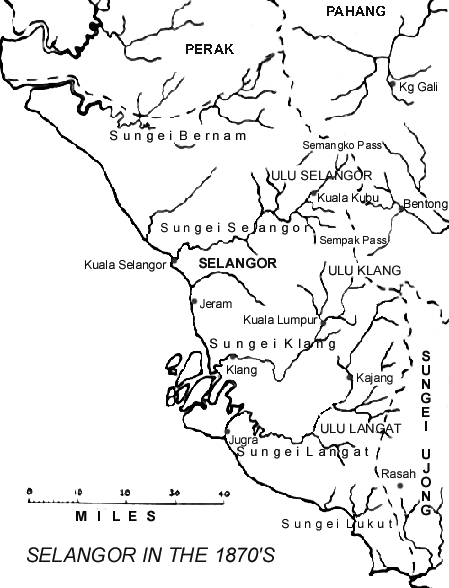 |
|
|
|
|
|
|
|
|
|
|
|
Rebuilding Kuala Lumpur.
Yap Ah Loy's success in building Kuala Lumpur may have seemed to be easy and inevitable. But in reality, it was a desperately harsh struggle of which success was not guaranteed.
The once prosperous Kuala Lumpur was completely destroyed during the civil war. When Davidson visited Kuala Lumpur in 1875. he wrote that "most of the mines were completely flooded out during the last war and all their mine houses, machinery and property were burnt, or otherwise destroyed. After the fighting was over they had to reconstruct their mines with borrowed money which has not been paid off. Their creditors are now pressing them and traders will scarcely give them any credit."
The Chinese would have abandoned the devastated Kuala Lumpur had not been for Yap Ah Loy's persuasion and perseverance in rebuilding Kuala Lumpur. Swettenham remarked that Yap Ah Loy's "perseverance alone, I believe, has kept the Chinese in the country."
In order to rebuild Kuala Lumpur and restart tin mining, Yap Ah Loy needed a large labour. With the restoration of law and order, some Chinese had begun to return. Yap Ah Loy also actively brought in labour from Klang, Sungei Ujong and China. In early 1875, he brought in 2000 miners from Klang and 600 from Sungei Ujong.
Picture of miners, the mine pit and their attap houses.
With a labourer costing between $80-$100 annually in wages and food, and the need for a year's maintenance before any money can be recovered from the sale of tin, Yap Ah Loy faced severe financial difficulties. Until 1879, the price of tin was mired at the range of $50-60 per bahara, under the impact of new low cost production in Australia.
Yap Ah Loy faced the two main problems of raising the capital to finance mining and reducing the costs of production by obtaining cheaper supplies and improving communications. When the Malaccan merchants took the opportunity to raise the prices of supplies, Yap Ah Loy, with Davidson's sponsorship, began to import supplies direct from Singapore. Davidson arranged for a Selangor Government guarantee that enabled Yap Ah Loy to purchase an initial supply worth $10,000 from Guthrie & Co. Although Yap Ah Loy undertook to sell all his tin through Guthrie's, and to repay Guthrie's loans with the sales proceeds, Yap Ah Loy in effect repaid Guthrie's enough to maintain the loan at $10,000 and sold the rest of the tin elsewhere.
Financiers Interest Rates charged per annum
Malaccan merchants 18%
Guthrie & Co. 15%
Selangor Government 10%
At the same time, Yap Ah Loy encouraged the Malays to plant padi so that a cheap local source of rice would be available to town's population.
From 1875 to 1878, Yap Ah Loy became increasing hard-pressed as tin prices remained low. In 1878, the Resident, Douglas, reported that "the Captain China's power does hang by a thread as he is on the verge of bankruptcy."
A boy hawking his wares.
By the middle of 1879, Yap Ah Loy's fortunes reversed when by less a stroke of good luck and more a boom in the demand for tin, tin prices doubled and rose above the $100 per bahara level. By mid 1880, Yap Ah Loy had paid off all his debts and was never to be in financial distress again.
Yap Ah Loy's success in rebuilding Kuala Lumpur was confirmed by its naming as the state capital in March 1880. |
|
|
|
|
|
|
|
|
|
|
|
Yap Ah Loy's Administration.
As Kapitan Cina, Yap Ah Loy had the powers of a typical Malay chief, including the power of life and death over his followers. He could make laws when deemed necessary, but he did not have the right to collect tax.
He lived in good terms with the Malay communities and their leaders in and around Kuala Lumpur, of which the Dato' Dagang was the most important of the chiefs.
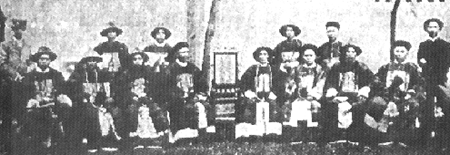
Late 1890s, prominent Towkays of Kuala Lumpur with Qing dynasty officials. Front row from right: Loke Chow Kit, Chan Sow Lian, Loke Yew and Yap Kwan Seng.
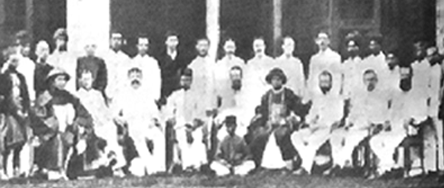
Group photograph taken in Kuala Lumpur in 1884.
Front row (L to R): Yap Ah Shak, unidentified, Dr Sinclair, Raja Laut, J.P. Rodger (British Resident Selangor), Yap Ah Loy, unidentified, Captain Syers (Police Chief, Selangor).
Yap Ah Loy probably administered through the leading Mine employers and clan or secret society headmen; usually the same individuals were both the employers and the headmen. Yap Ah Loy's right-hand man was Yap Ah Shak, who was now the head of the Hai San society in Selangor and the largest mine owner after Yap Ah Loy.
Yap Ah Loy acquired a reputation for thoroughness in the treatment of criminals and other troublemakers. He built a prison large enough to accommodate 60 people, and drew up detailed rules for punishing all offenders. These offenses were graded carefully, with maximum penalties for repeat offenders. For a first offense, a thief was paraded through the streets with the stolen good tied to his back and shoulders; for a second offense, an ear was cut off; and for a third he was executed. The execution was not performed by hanging or beheading, the offender was made to kneel with his hands tied behind his back, and a sword was plunged through his throat by the executioner. On the other hand, minor offenders were more usually locked up before their trial. The punishments seemed severe, but they had a good effect on discouraging crime.
Yap Ah Loy's strict policies proved to be successful. In the months following his appointment, thieving became unknown. It was said that "no man dared stoop to pick up even which he had dropped on the road." Pirates no longer raided the boats moving down the river and the loads of tin reached the river mouth safely.As a result, he effectively kept peace amongst 10,000 Chinese with only a token force of six police.
Both Yap Ah Loy and Yap Ah Shak sat as magistrates to in minor cases. It was said that they acted as magistrates and mediated disputes amongst the people at a corner of Yap Ah Loy's Chinese medicine shop, Chop Tuck Sang. Until 1878, serious cases were tried in Klang, but between 1878 and 1880, the Resident and a magistrate came to Kuala Lumpur monthly to hold the High Court and the Magistrates' Court.
The Composition of Yap Ah Loy's Administration
Secretary and Business Affairs Chew Yeok
Justice Administrator Yap Ah Shak
Legal Adviser Wong Tian Chan
Military & Defense Chung Piang & Hiu Fatt
Foreign Affairs Voon Siew
Domestic Affairs Kok Fan Kui
Custom, Taxation & Revenue Wong Chi
Transport & Logistics Chee Kuan Tin
English Translator Moi Fa Chong
Malay Translator Che Ache
Swettenham commented on Yap Ah Loy as follows:
"As the confidence of his countrymen in Capitan Ah Loy is great, if not implicit, so is his stake in the country superior to that of all others, and from this fact I conclude that the government may rely upon him to use his influence for law and order, and that his past loyalty and successful administration of the District entrusted to him would seem to entitle him to consideration and a careful hearing of his views on matters affecting the well-being of the Chinese population in general and in Kuala Lumpur in particular."
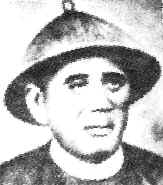
Yap Ah Shak, successor to Yap Ah Loy. Kapitan Cina from 1885-1889
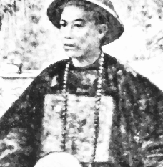
Chew Yeok, Yap Ah Loy's chief assistant and in-law.
Yap Ah Loy's biggest contribution to Kuala Lumpur was probably his success in establishing Kuala Lumpur as the centre for commerce in Selangor. This success was to eventually compel the Selangor Government to relocate the state capital from Klang to Kuala Lumpur. In time, Kuala Lumpur was to become the national capital for the newly independent nation of Malaysia in 1957.
Yap Ah Loy was not ahead of his times as a municipal administrator. In 1882, Swettenham and his colleagues described the streets of Kuala Lumpur as only 12 feet wide and were "all but impassable alleys. ..... The filth of the market is indescribable, everything that rots or becomes putrid, all offal and refuse is thrown on to the ground or into ditches which surround the shed. ..... The refuse of the drains is simply removed therefrom and laid on the side of the road ..... small pox, cholera and fevers break out here very often."
His fire precaution consisted of an order that every household keep a barrel full of water ready at all times. On 4 January 1881, the entire town was burnt down, with a loss estimated at $100,000 of which Yap Ah Loy's shouldered the largest share of it.
After the disastrous fire of 1881, Yap Ah Loy started a brickworks at the outskirts of town to rebuild town buildings in brick or adobe with tile roofs. The brickworks is now gone, but nevertheless had left its mark with the an outskirt of today's Kuala Lumpur known as Brickfields.
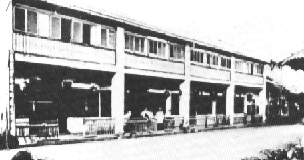
The first row of brick shop houses in Kuala Lumpur, on the edge of Market Square, built by Yap Ah Loy in 1884.
Yap Ah Loy's road construction in and around Kuala Lumpur were more exemplary. The main mining areas were linked up with the town, and streets were laid out in the town. Yap Ah Loy told Swettenham that $20,000 had been devoted to road works, in the more ambitious constructions, each mile of road was estimated to cost $1,500. In return for these projects, Yap Ah Loy was compensated with the permanent titles to the land he occupied in the centre of Kuala Lumpur.

Junction of Petaling Street and High Street.
The tracks to the mines are preserved to this day in the form of Jalan Ampang, Jalan Pudu, Jalan Petaling and etc. The modern passers-by who walk along these roads can be sure that they are following the footsteps of heavily laden porters who threaded these paths some 130 years ago.
Yap Ah Loy also started a tapioca mill in Petaling Road with an imported 8 horsepower engine. This venture in which Sultan Abdul Samad had a $3,000 stake in the tapioca plantation, fell apart due to the fall in price of tapioca during 1880. The present Jalan Petaling (or Petaling Road as it was known then) has remained to this day been known to local Chinese as Chee Cheong Gai (or Tapioca Mill Road).
Yap Ah Loy also founded a refuge at which the sick could have food and shelter. It was maintained by a levy of $1 per pig slaughtered.
He took a big part in founding the first Chinese school in Kuala Lumpur and provided the school a schoolmaster until the Government brought in one from Singapore. The school was opened on Chinese New Year in 1884 in High Street. The Chinese towkays were known to take an active interest in the school, by visiting the school to test the pupils in reading and writing. |
|
|
|
|
|
|
|
|
|
|
|
His Death.
In 1884, Yap Ah Loy began planning to visit China. He proposed to appoint Yap Ah Shak and Chew Ping to manage his property in his absence. His journey was delayed for several reasons, including a storm on 1 September 1884 in which 14 houses and a wing of the newly erected Police barracks were blown down. The storm also did some damage at the Residency and its flagstaff was blown down.
At the end of 1884, Yap Ah Loy fell ill, with bronchitis and an abcess of the left lung. He rejected the use of Western medicine and instead relied on traditional Chinese medication from his medicine shop.
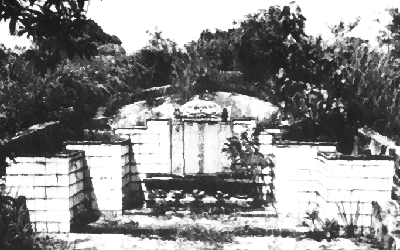
Yap Ah Loy's grave situated in Kuala Lumpur
In March 1885, he seemed to be recovering, but in the morning of 15 April, he passed away. He was 48 years old.
Yap Ah Loy had died before seeing his Kuala Lumpur become the leading town in Malaya by 1886.
Yap Ah Shak and Chew Ping, "the most intimate and trusted friends of the late Capitan", became the administrators of his estate, and Yap Ah Shak succeeded him as the new Kapitan Cina.
The following passage appeared in the Selangor Journal in 1893,
"The wish of his heart was to return to China, but who can tell Heaven's reasons for opposing the desires of men. He passed away ...... The English learnt he was dead by the flag flying at the Residency; for God, whose power to give honour to His servants is beyond our knowledge, on that day struck and broke the flagstaff. When the English found this, they dared not raise the flag again. They held a meeting and determined to be present at the funeral and follow to the grave.
Nonetheless the State continued to prosper greatly.
The tale is finished. May it be well mentioned in future ages! I am a writer of little knowledge, but others of greater skill may complete the lines and round the verses. Should such a man complete this work may he long prosper and his good name go down to his decedents.
This is the whole story of Capitan Yap Ah Loy." |
|
|
|
|
|
|
|
|
|
|
|
sejak konflik isu 'bukit kepong' mmg elok la TPM arahkan sejarah disemak semula.
mmg kalo kita menghayati 'filem' bukit kepong arahan datuk james samsudin, bleh buat kita menangis... tapi bila kita tengok plak sekeping foto gambar ketika tok janggut digantung dgn keadaan kepala kebawah... polis british yg 'posing' di kiri gambar dgn uniform sebijik dgn polis british dlm filem bukit kepong tadi membuatkan i keliru "siapakah yg patut kita sanjung? polis british atau tok janggut??"
berbalik pada tajuk tred pasal yap ah loy nih...
i pon terfikir perkara yg sama, tak siapa tau 'tak mustahil ada sejarah yg dipesongkan'. mula2 kita perhatikan petikan nih...
Ketika itulah juga dia bertemu dengan seorang lagi rakan iaitu Yap Ah Shak dan atas cadangan pemuda itu, Yap diterima menjadi pembantu kepada Liu Ngim Kong seterusnya menyertai kumpulan Shin Kap.
Kehidupannya agak baik sejak menyertai pakatan itu sehinggalah awal 1860 apabila berhubung lombong timah. Persengketaan yang konflik tercetus antara dua ketua suku di kawasan itu semakin buruk itu akhirnya mencetuskan peperangan.
Pelombong di kawasan itu turut berpecah kepada dua kumpulan berasingan mengikut sokongan dua ketua suku berkenaan dan satu daripada kumpulan itu diketuai Shin Kap.
sefaham i kumpulan2 yg berebutkan kawasan jajahan dan sanggup berperang antara kumpulan nih byk terjadi dlm hidup seharian "gangster @ kongsi gelap" je.
pastu kita perhatikan plak sepotong kisah sini...
Bagi kesalahan kecil, pesalah akan dipenjara terlebih dulu sebelum dibicara. Hukuman yang dirangka Yap mungkin kelihatan seperti kejam, tetapi ia nyata berkesan untuk membendung jenayah ketika itu.
Malah, sebulan selepas beliau dilantik menjadi kapitan dan mengemukakan undang-undang itu, kecurian tidak pernah berlaku sehingga digambarkan jika ada barang yang terjatuh di tengah jalan, tiada siapa yang berani mengambilnya.
Lanun juga tidak lagi berani merompak kapal di sungai dan bijih dapat dihantar dengan selamat. Yap berjaya menjaga keamanan 10,000 penduduk Cina dengan hanya mengambil enam polis.
kat perenggan pertama menerangkan hukuman ditangan sendiri oleh yap ah loy mana kala perenggan ke-2 dan ke-3 membuktikan 'kekejaman' kumpulan yap ah loy sampai mereka digeruni penduduk tempatan malah dikalangan lanun jugak! ini membuktikan kumpulan/kongsi yap nih jauh lebih kejam dari lanun.
so, kemungkinan yg i cuba sampaikan adalah yap ah loy mungkin seorang ketua kongsi gelap. dgn kuasa yg dia ada mampu menjulang nama dia sbg 'pembuka kuala lumpur'. perlu ke kita sanjung penjenayah??
apa2 pon, mintak mahap la sbb ini hanya sekadar pandangan peribadi i dan tiada niat nak menyinggung perasaan tt dan peminat2 yap ah loy yg lain.
ramai individu mempunyai pandangan masing2 tentang sejarah sbg contoh pandangan prof dr zainal kling dan pandangan dr mahathir menegaskan "negara takpernah dijajah sebaliknya kehadiran british sbg penasihat sultan mengurus negara" manakala TPM kita pulak mengaku mmg negara dijajah walau tidak secara rasmi tapi pada waktu itu sultan terpaksa menurut 'nasihat' british. |
|
|
|
|
|
|
|
|
|
|
|
banyak versi cerita ni, ada yg anggap yap ah loy orang yg berjasa dan memajukan KL,
tapi ramai juga yg minta sejarah dikaji semula kerana ikut pendapat mereka yap ah loy hanyalah seorang ketua kongsi gelap yg kisahnya dibesar-besarkan dan orang melayulah yg membuka dan memajukan KL dan yap ah loy cuma mengambil kesempatan untuk mengumpul kesenangan saja. |
|
|
|
|
|
|
|
|
|
| |
|